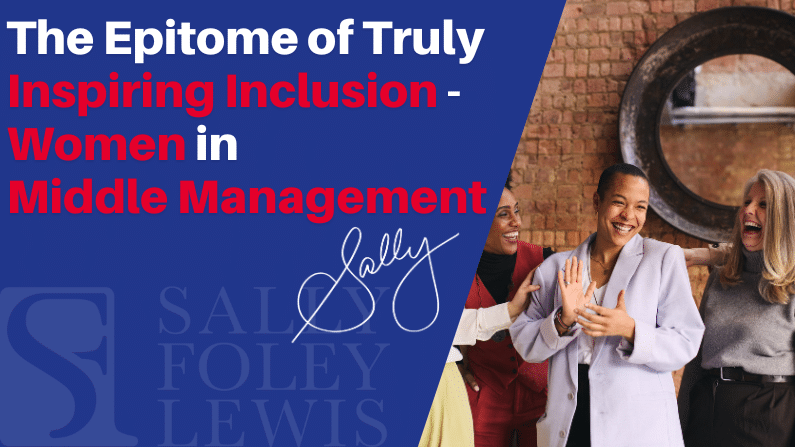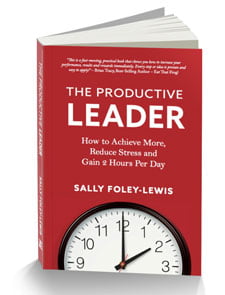In celebration of International Women’s Day, which is globally recognised and celebrated every March, let’s bring the spotlight to the ever-inspiring and hard-working women in middle management – the epitome of truly #InspiringInclusion.
Inspire Inclusion is this year’s International Women’s Day’s theme.

Image source: www.internationalwomensday.com
It’s with thanks to many great women in history and today who made and are making significant contributions to giving women the equality they truly deserve.
Here are some great names who made and make significant contributions to bringing equality for women:
- Gail Kelly – first female CEO of a major Australian bank. She broke barriers and reshaped the financial sector’s leadership landscape. Her tenure at Westpac, where she served as CEO from 2008 to 2015, was marked by strategic vision, cultural transformation and a commitment to gender diversity.
- Susan Lloyd-Hurwitz – as the CEO and Managing Director of Mirvac Group, she has been a prominent figure in the Australian property industry. Her strategic leadership and focus on sustainability have helped shape Mirvac’s reputation as a leader in urban development and responsible business practices.
- Abigail Adams – made a plea to her husband, founding father John Adams, and the Continental Congress to “remember the ladies and be more generous and favourable to them than your ancestors. If particular care and attention is not paid to the ladies, we are determined to foment a rebellion, and will not hold ourselves bound by any laws in which we have no voice or representation.”
- Elizabeth Cady Stanton and Lucretia Mott – organised the Seneca Falls Convention, which led to the passage of the 19th Amendment granting women the right to vote.
- Elizabeth Broderick – served as Australia’s Sex Discrimination Commissioner from 2007 to 2015. Through initiatives such as the Male Champions of Change program, Broderick championed women’s leadership and worked tirelessly to dismantle systematic barriers to gender equality in the workplace.
- Elizabeth Blackwell – first woman to graduate from medical school in the United States with the highest grades among her class.
- Rosa Parks – helped launch the Civil Rights Movement when she refused to give up her seat to a white man on a bus in Montgomery, Alabama.
- Hillary Clinton – the first woman who received a presidential nomination from a major political party. Clinton said, “Standing here as my mother’s daughter and my daughter’s mother, I’m so happy this day has come.”
Despite the fact and the amazing contributions women bring to the table, according to a survey conducted by the Australian Government in collaboration with Workplace Gender Equality Agency, “Only 1 in 4 organisations have a gender-balanced leadership team.”
In addition, “Only 22.3% of women are CEOs, 35.1% are holding key management positions, 34% are board members and only 18% are board chairs in the Australian workforce,” according to the Australian Government website.
In the United States on the other hand, only 25% of women hold C-suite positions in the top 1000 corporations, with a mere 7.2% represented in the Fortune 500 CEOs list.
These statistics underscore the systemic barriers and biases hindering women’s progress in leadership roles. As we strive for gender equality, it’s imperative to address these disparities by focusing on early career leadership development and talent identification and nurturing, particularly within middle management. This is where the foundation for inclusive leadership is laid, paving the way for a more equitable future.
According to a study conducted by McKinsey & Company, a global management consulting firm, “Companies have increasingly regarded inclusion and diversity as a source of competitive advantage and specifically as a key enabler of growth.”
In addition to that, McKinsey & Company also stated, “Companies in the top quartile for gender diversity on their executive teams were 15 percent more likely to experience above-average profitability than companies in the fourth quartile.”
It’s simple, companies need more women in leadership roles now more than ever. Do you agree?
Why do women matter in leadership roles?
The presence and influence of women are indispensable factors for fostering innovation, driving growth and cultivating inclusive organisational cultures. It becomes evident that women bring unique perspectives, skills and qualities that are essential for navigating today’s complex business environments.
Research conducted sheds light on the profound impact of women in leadership roles. Here are some key findings:
- Innovative Thinking and Problem-Solving: Women bring a diverse array of perspectives and experiences to the table, fostering a culture of innovation and creative problem-solving within leadership teams. Research by the Peterson Institute for International Economics found that companies with female leaders are more likely to introduce new products and services, driving innovation and market competitiveness.
- Effective Communication and Collaboration: Women are often celebrated for their strong interpersonal skills, empathy and ability to build meaningful relationships. These qualities contribute to more effective communication, collaboration and team dynamics within leadership structures. Harvard Business Review highlights the importance of inclusive leadership behaviours, which are often exemplified by women, in fostering a culture of belonging and psychological safety in the workplace.
- Strategic Decision-Making and Risk Management: Studies have shown that gender-diverse leadership teams are more adept at strategic decision-making and risk management. By leveraging diverse perspectives and insights, organisations can mitigate groupthink and make more informed decisions that drive long-term success and sustainability.
- Role Modeling and Mentorship: The presence of women in leadership roles serves as a powerful source of inspiration and mentorship for aspiring female leaders at all levels of the organisation. Research by Catalyst underscores the importance of visible female role models in empowering women to pursue leadership positions and shatter glass ceilings.
It is truly significant to recognise and harness the transformative power of gender diversity in leadership. By championing the inclusion and advancement of women in leadership roles, organisations can unlock untapped potential, drive innovation and cultivate cultures of excellence and equity.
If you’re a woman in a leadership role and you need help and support in terms of boosting your confidence and self-leadership so you can lead your team with effectiveness and efficiency, The CONFIDENCE Program™: Middle Managers Mastermind can help! Find out more here.
Happy International Women’s Day … month … to you. How do you #InspireInclusion in your role as a middle manager? I’d love to know.




